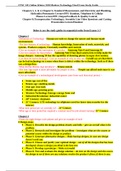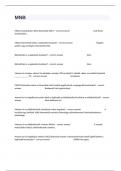Summary
Summary Social Influence: Textbook + added articles & video clips
- Course
- Institution
- Book
This document provides a compact and clear summary of all of the content for the course Social Influence (PSMIN07). The summary provides a good basis for understanding the concepts of social influence. I would advise to read a part of the summary, and then watch the lecture about the same chapter(s...
[Show more]













